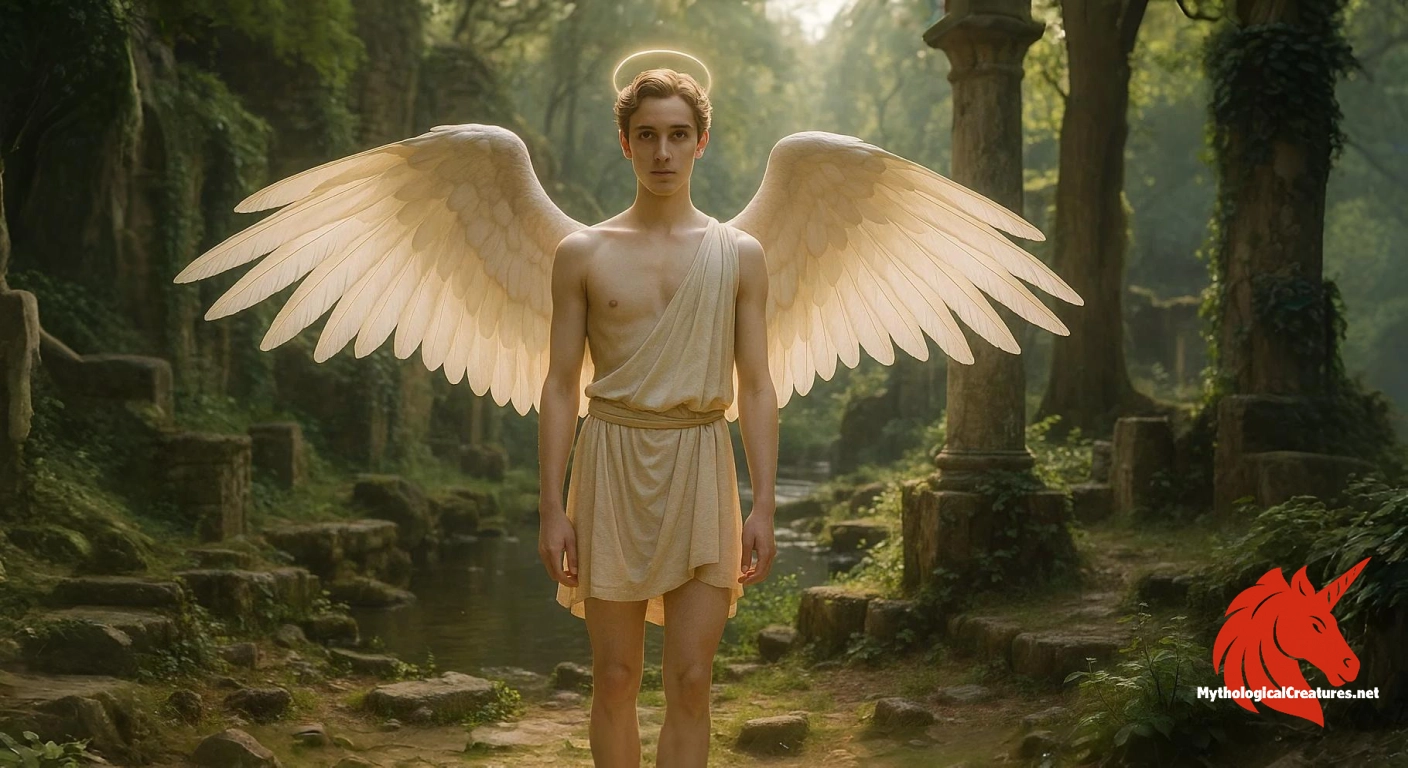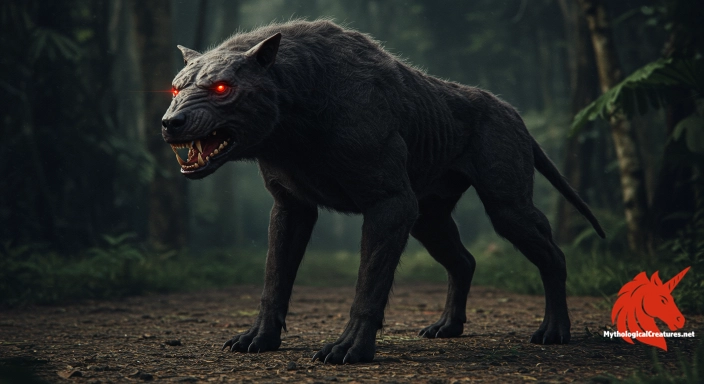Epiur: Epiur is an Etruscan divine infant depicted with the face of a young man and often shown with wings.

Epiur
Epiur - Epiur represents the divine care of infancy and the integration of mortal vulnerability with celestial protection in Etruscan myth.
Origins & First Encounters
Epiur emerges from the rich tapestry of Etruscan mythology as a uniquely enigmatic figure whose origins are steeped in mysticism and divine guardianship. His iconography, blending the innocence of infancy with the mature, contemplative visage of a young man, captures the imagination and reflects a deeper symbolism of potential and transformation. The figure’s earliest attestations appear in artworks where he is depicted as an infant, suggesting a ritualistic celebration of both birth and divine foresight. His presence in myth indicates an intricate interplay between human vulnerability and celestial wisdom. Epiur’s recurring appearance in the visual narrative of Etruscan art points to his special relationship with deities who oversee protection and nurture. The myth underscores a celebration of new beginnings and the promise of future strength, as symbolised by his delicate features and ethereal characteristics. His frequent association with protective gods like Hercle and Menrva highlights the importance of divine care in the early stages of life. Over time, Epiur has come to represent the broader themes of fertility, rejuvenation, and the convergence of the mortal with the divine, resonating deeply within the Etruscan cultural heritage.
Source Texts & Tale Variants
The principal sources for understanding Epiur come from a range of ancient Etruscan artefacts, temple reliefs, and ceremonial depictions carved or painted on pottery. Inscriptions and iconographic evidence bring forth a narrative that, while fragmentary, illustrates his role as an intermediary between the mortal realm and the higher gods. Beyond the confines of literary records, the myth of Epiur emerges in folkloric traditions where the depiction of infant deities was used to symbolise purity and divine ordination. Variants of his story can be inferred from the careful study of Etruscan tomb paintings and votive offerings, which reveal a consistent motif of the infant with mature features supported by other deities. Although the surviving texts are limited in explicit detail, the recurring themes across different media suggest a robust, shared mythos that resonated with ancient believers. Some accounts suggest that his presentation to other gods was part of a ceremonial rite, symbolising the bestowal of divine favour. Over successive generations, minor regional narratives expanded upon his identity, contributing to a layered and complex mythological character. The careful reinterpretation of these ancient sources by modern historians continues to shed light on the multifaceted role Epiur played in Etruscan religious life.
Form & Powers
The visual portrayal of Epiur is striking for its deliberate contradictions and nuanced detailing. He is most commonly rendered as an infant with the distinctive facial features of a young man, merging the soft contours of youth with the refined expressions of emerging maturity. His eyes, often depicted as wide and contemplative, suggest a consciousness that belies his tender age. Intricate wing motifs grace his figure, with the feathers rendered in delicate, elaborate patterns that hint at his celestial heritage and symbolic role as a messenger. Artistic depictions sometimes enhance his wings with a subtle luminescence, setting him apart from ordinary mortals. His infantile body, though small and vulnerable, is portrayed with a graceful poise that infuses him with an unexpected dignity. The contrasting elements of his appearance—the softness of youth against the clarity of a man’s features—invite viewers to contemplate the embodiment of potential and destiny. Variations in size and detail, as seen in different artefacts, suggest that the artistic techniques and symbolic interpretations evolved across different periods and regions within the Etruscan world.
Regional Faces
Regional depictions of Epiur reveal a fascinating interplay of local artistic traditions and religious interpretations that subtly alter his presentation. In the heartlands of Etruscan civilisation, he is most often shown as a delicate infant embraced by revered deities, underscoring a universal theme of divine protection. In contrast, certain eastern centres exhibit Epiur with more pronounced celestial attributes, such as exaggerated wings or additional iconographic symbols that allude to cosmic forces. Local artisans sometimes incorporated distinctive regional motifs, blending native styles with influences from neighbouring Mediterranean cultures. The nuances in his portrayal—from the treatment of his wings to the rendering of his facial features—reflect localized interpretations of divine guardianship and spiritual destiny. These adaptations not only enriched his mythic persona but also allowed communities to align his representation with their own cultural and ritualistic practices. In some areas, the emphasis on his protective role was enhanced by placing him within a broader narrative of familial divine lineage. Thus, the regional diversity in Epiur’s depiction serves as a microcosm of the dynamic evolution of myth in ancient Italy, where art and faith converged to celebrate the divine in multiplicity of forms.
Cultural Parallels
A comparative examination of Epiur with other mythological figures highlights the universal allure of the divine infant motif. Similar to the cherubic depictions found in Roman iconography and the winged infants of Greek mythos, Epiur embodies a blend of vulnerability and power that spans cultural boundaries. His representation resonates with figures like Cupid and Eros, where the juxtaposition of youth and divinity speaks to themes of hidden potential and the promise of transformation. The unique aspect of his depiction—a harmonious combination of infant form and mature countenance—mirrors broader tendencies in ancient cultures to encapsulate the duality of life stages within a single figure. Across different traditions, such portrayals served as allegories for the continuity of life, the cyclical nature of existence and the nurturing role of the divine in human affairs. The shared motif of wings further aligns him with divine messengers and celestial beings seen in various cultural mythologies. By drawing parallels with these cross-cultural archetypes, one can appreciate how Epiur’s imagery asserts both a specific Etruscan identity and a connection to a broader mythological tapestry. This interplay illuminates the way ancient societies used similar symbols to interpret the mysteries of birth, protection, and spiritual ascendancy.
Legacy & Modern Evolution
The evolution of Epiur’s imagery over time reflects a profound transformation in the understanding and appreciation of mythological symbolism. Once confined to the sacred spaces of Etruscan temples and tombs, his figure has gradually found new life in modern artistic and cultural narratives. Contemporary reinterpretations have captured the imagination of historians, artists, and enthusiasts alike, casting him as a symbol of rebirth and transcendent creativity. Modern exhibitions and academic discussions routinely explore his dual nature, offering fresh perspectives that bridge ancient traditions with current artistic sensibilities. His image, recontextualised through digital art and sculpture, speaks to the enduring appeal of myth in today’s cultural landscape. The narrative of a divine infant with a mature face continues to serve as a potent metaphor for the interplay of innocence and wisdom. Scholars now examine his role not only as a relic of religious expression but also as an emblem of the transformative power of myth in society. Epiur’s enduring legacy is marked by a willingness to adapt and reinterpret, ensuring that the spirit of Etruscan ritual and artistry remains alive within modern creative discourse.
Interesting Fact
Epiur’s unusual depiction as both an infant and a figure with a mature, youthful face highlights a complex and paradoxical symbolism in Etruscan art, blending the innocence of early life with the promise of divine wisdom.
Quick Creature Info
Features:
Our Mythic Legendary Rating:

Supernatural Powers:
Physical Attributes:
Abilities:
Behavior:
Lore:
Related Creatures, Tales or Lore
- ?[object Object]
- ?[object Object]
- ?[object Object]
References
Discover Another Mythical Legend You May Not Have Heard Of?
Uncover the mysteries of ancient folklore and expand your knowledge of legendary beings from cultures around the world.
Dare to Meet the Cadejo....
Curated by the Mythological Creatures Team (rev. May 2025)
